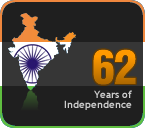Almost all of the early civilizations in the world had the Sun as the God.
They all believed that Sun is the eternal truth and his(and in some regions it is her) power lead the universe and all other creatures.
So let us know some facts and forms in which the Sun is called and named across all the civilizations.
 Sun God at the Konarak temple in Orissa
Sun God at the Konarak temple in OrissaEven the Gayatri mantra, which is regarded as one of the most sacred of the Hindu hymns is dedicated to the Sun. The Adityas are a group of solar deities, from the Brahmana period numbering twelve. The ritual of sandhyavandanam, performed by some Hindus, is an elaborate set of hand gestures and body movements, designed to greet and revere the Sun.
 Wall hanging representation of Sun God according to the Hindu religion
Wall hanging representation of Sun God according to the Hindu religion The famous Wheel of the Aditya Rath at the Sun temple in Orissa
The famous Wheel of the Aditya Rath at the Sun temple in OrissaThe Sun God is said to married to the beautiful goddess Ranaadeh, also known as Sanjnya. She is depicted in dual form ("jor"), being both sunlight and shadow, personified. The goddess is revered heavily in Gujarat and Rajasthan.
The charioteer of Surya is Arun, who is also personified as the redness that accompanies the sunlight in dawn and dusk.
 The winged sun was an ancient (3rd millennium BC) symbol of Horus, later identified with Ra
The winged sun was an ancient (3rd millennium BC) symbol of Horus, later identified with Ra The Trundholm sun chariot pulled by a horse is believed to be a sculpture illustrating the sun, an important part of Nordic Bronze Age mythology
The Trundholm sun chariot pulled by a horse is believed to be a sculpture illustrating the sun, an important part of Nordic Bronze Age mythologyChhath (Hindi: छठ, also called Dala Chhath) is an ancient Hindu festival dedicated to Surya, the chief solar deity, unique to Bihar, Jharkhand and the Terai. This major festival is also celebrated in the northeast region of India, Madhya Pradesh, Uttar Pradesh, and parts of Chhattisgarh.Hymns praying to the sun can be found in the Vedas, the oldest sacred texts of Hinduism. Practiced in different parts of India, the worship of the sun has been described in the Rigveda.










































